Below are photographs documenting the deterioration of our electrical grid, as well as features of the grid that may be helpful to you as you learn about electrical pollution.
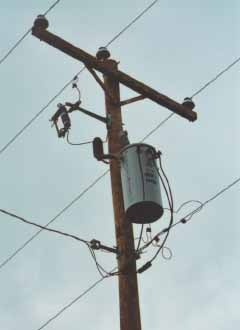
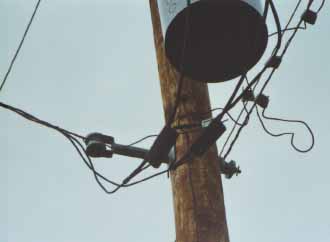
Crimp-on connectors were used to join the transformer (picuted above) to distribution wires. They are the black rectangles in the center of the photo.
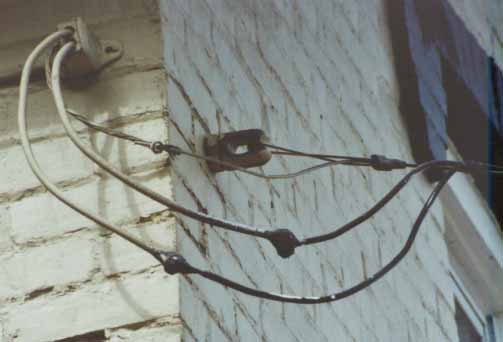
Split-bolt connectors on a utility owned house connection in Watertown, WI. The split-bolts themselves are not visible as they are wrapping in many layers of electrical tape for protection. The PSC in Wisconsin has not allowed the electrical utilities to use split-bolts for many years because over time they loosen up and arc.

This pole is located on Springer Rd. in the Town of Waterloo, WI. Is this the approved method of repairing broken poles?
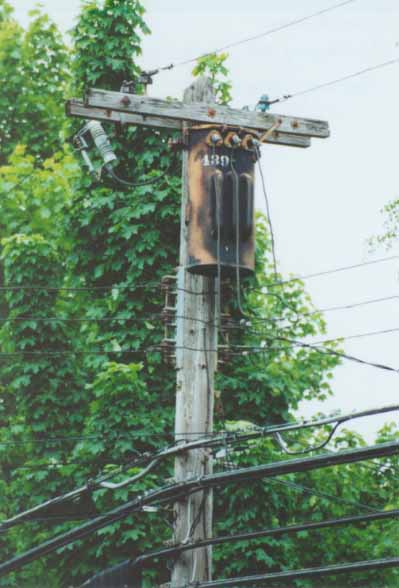
Transformer with paint showing evidence of deterioration and old-style connectors (which unfortunately do not show up well in the scanned picture) located in a residential neighborhood on Mulberry St. in Lake Mills, WI.
Transformer with paint showing evidence of deterioration and wires with insulation falling off (which unfortunately does not show up well in the scanned picture) located on East Washington St. in Madison, WI.
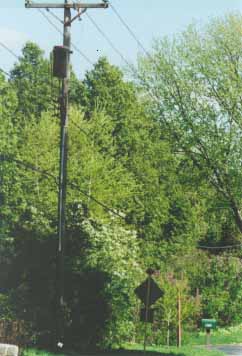
Transformer with paint showing evidence of deterioration located on Edgehill Rd. in Shorewood Hills, WI.